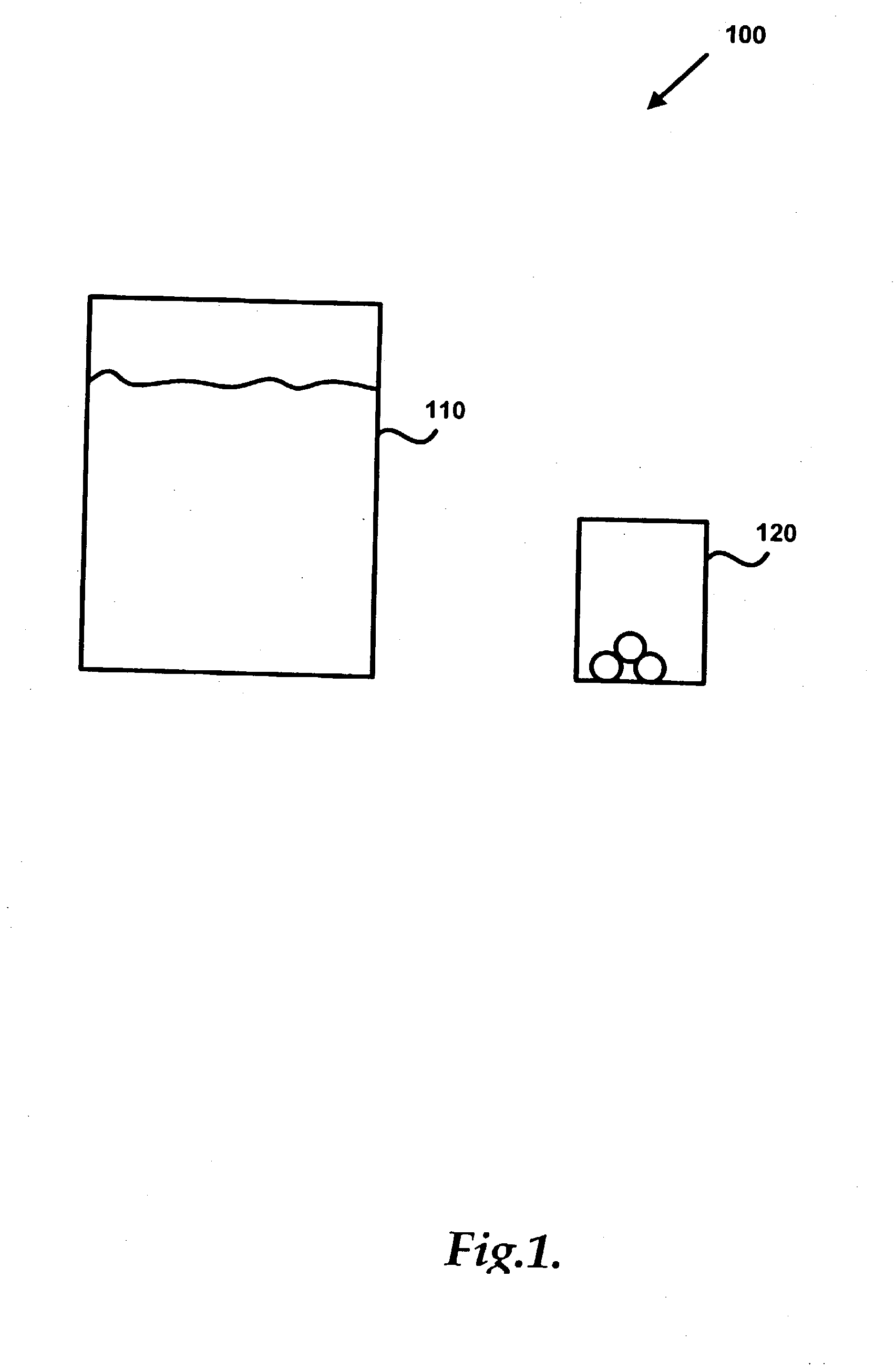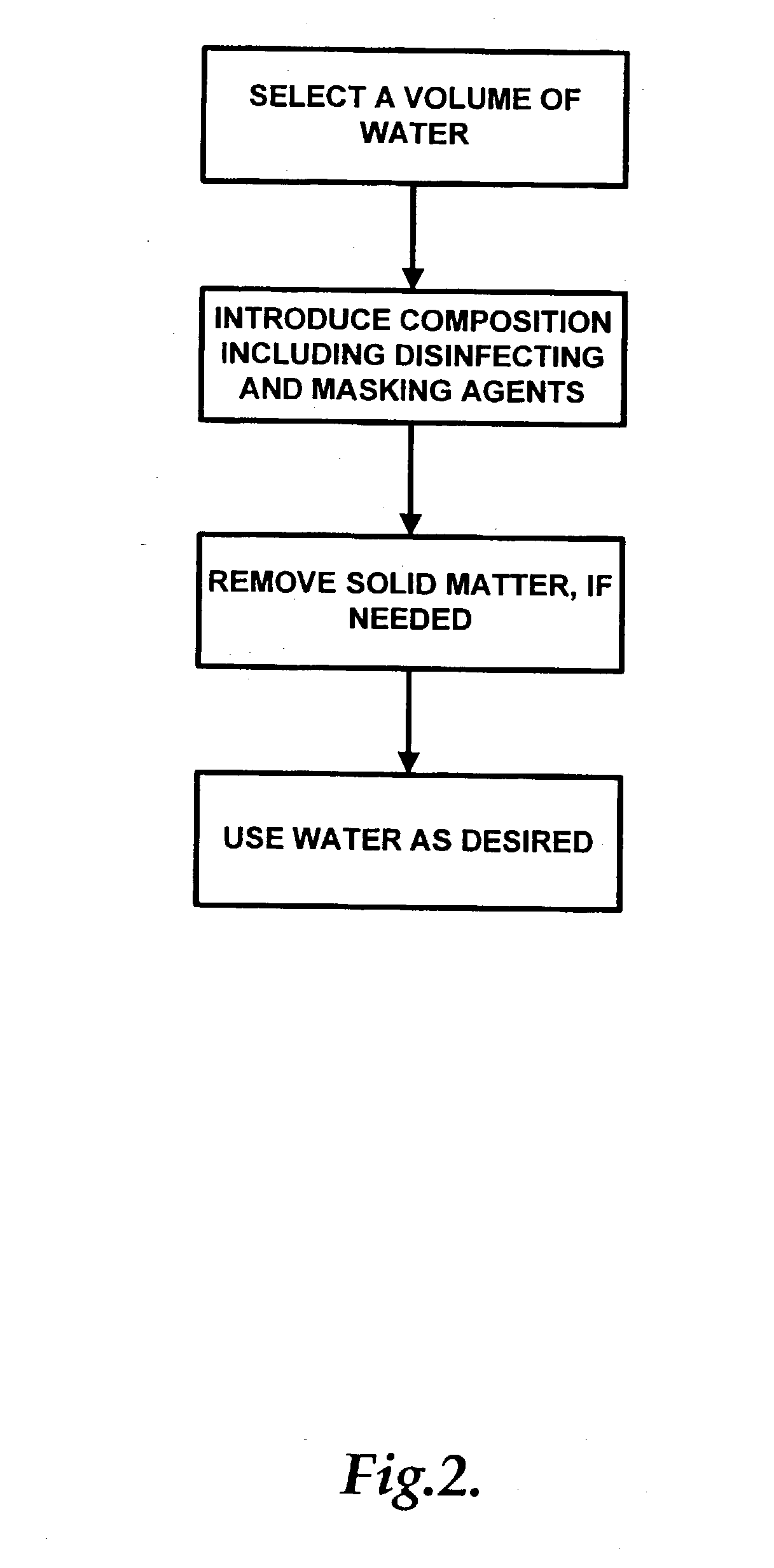Water treatment compositions with masking agent
a technology of masking agent and water treatment composition, which is applied in the field of water treatment compositions with masking agent, can solve the problems of affecting the taste and odor of the resulting water, the inability to guarantee the potability of the water they do receive, and the considerable number of people who die each year
- Summary
- Abstract
- Description
- Claims
- Application Information
AI Technical Summary
Problems solved by technology
Method used
Image
Examples
Embodiment Construction
[0183] The following example compositions A-X illustrated in Tables 3-5, utilizing citrus extracts such as lime, lemon, tangerine, or orange as masking agents, are in accord with the present invention. All percentages are by weight of composition.
4TABLE 3 A B C D E F G H Chitosan 2 1 1 2 1 Cationic modified potato starch 1 Magnafloc LT20 1 1 0.8 Magnafloc LT25 1 20.4 Magnafloc LT28 5 0.7 Aluminium sulphate 2030 35 Iron III sulphate 38 35 38 33 36 Calcium hypochlorite 1 0.8 0.85 1.5 0.9 1.3 1.2 Iodate0.02 0.01 Zinc Sulphate 3.5 Hectorite clay 25 49 36 27 Montmorillonite clay 63.8 35 35 48 Masking Agent 0.01 0.02 0.03 0.05 0.02 0.04 0.07 0.005 Sodium carbonate 10 24 24 13 15 23 Sodium bicarbonate 35 35 Potassium Permanganate 0.02 0.03 0.04 Miscellaneous to 100 to 100 to 100 to 100 to 100 to 100 to 100 to 100
[0184]
5TABLE 4 I J K L M N O P Chitosan 0.5 0.5 1 1 Cationic modified potato starch 22 Magnafloc LT20 0.8 1 0.3 Magnafloc LT25 0.7 0.9 Magnafloc LT28 1.2 0.5 0.9 Aluminium sulphate...
PUM
| Property | Measurement | Unit |
|---|---|---|
| aperture size | aaaaa | aaaaa |
| particle size distribution | aaaaa | aaaaa |
| particle size distribution | aaaaa | aaaaa |
Abstract
Description
Claims
Application Information
 Login to View More
Login to View More - R&D
- Intellectual Property
- Life Sciences
- Materials
- Tech Scout
- Unparalleled Data Quality
- Higher Quality Content
- 60% Fewer Hallucinations
Browse by: Latest US Patents, China's latest patents, Technical Efficacy Thesaurus, Application Domain, Technology Topic, Popular Technical Reports.
© 2025 PatSnap. All rights reserved.Legal|Privacy policy|Modern Slavery Act Transparency Statement|Sitemap|About US| Contact US: help@patsnap.com



